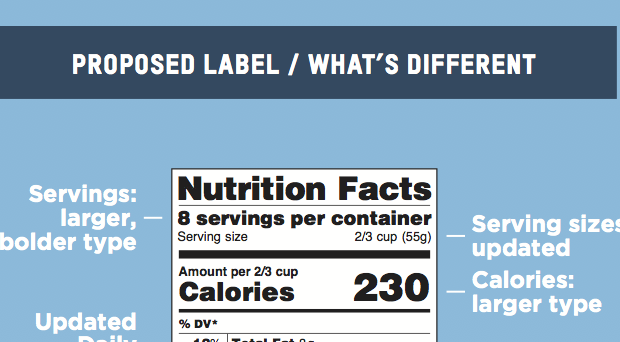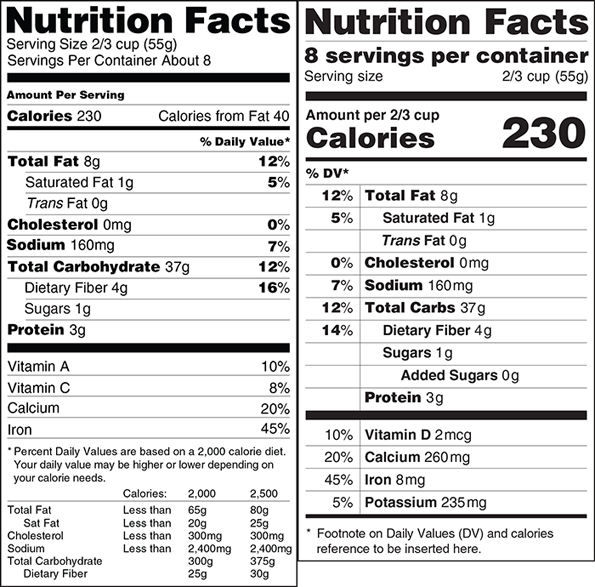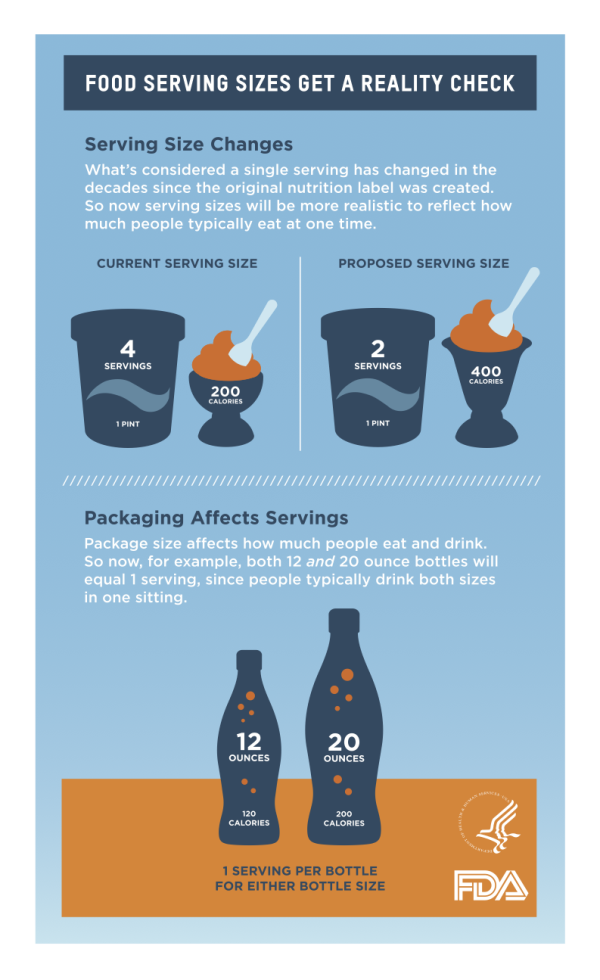The FDA proposes new labeling changes to food packaging
Before the Obama Administration’s term expires, the First Lady and the Food and Drug Administration may equip consumers with the means to incorporate a healthy diet into their lifestyles.
Spring is finally here—the days are longer, and it is time to enjoy the outdoors. In the words of First Lady Michelle Obama, “let’s move!” As a nation plagued with obesity, the Obama Administration initiated the “Let’s Move” campaign focusing on anti-obesity to help parents make healthier choices for their kids. Today, more than one-third of American adults are obese, meaning they have a body mass index (BMI) of twenty-five or more. For example, a male who is 5’9,” this translates into weighing over 170 pounds. It is estimated that by 2015, four out of ten Americans will be obese.
Obesity is an epidemic that may lead to diabetes, cancer, heart disease, and stroke.
Americans across all socioeconomic groups are potential victims of obesity. Obesity is an epidemic that may lead to diabetes, cancer, heart disease, and stroke. In addition to an unhealthy lifestyle, one of the main reasons Americans are vulnerable to obesity is that many are unable to understand what and how much food to consume. This dilemma stems from an inability to interpret nutrition labels on food packages despite an attempt to call attention to them. This inability primarily affects children, whose food choices are made by their parents.
During the anniversary ceremony of her “Let’s Move” campaign in February 2014, First Lady Michelle Obama remarked how difficult it was to understand the contents of packaged food: “[u]nless you had a thesaurus, a calculator, and a degree in nutrition, you were out of luck.” The First Lady’s goal was simple—parents and consumers should be able to understand what is in their food. As a result of ongoing anti-obesity campaigning efforts, consumers soon will no longer be baffled as to how to interpret nutrition labels on food packages.
For the first time in decades, the Food and Drug Administration (FDA) has proposed redesigning the nutrition label on food packages and updating its contents to reflect what Americans actually consume.
The food labels required by the federal government beginning in the early 1990s were based on eating habits and nutrition data from the 1970s and 1980s. The First Lady’s goal of bringing clarity to nutrition labels led the Food and Drug Administration (FDA) to propose a rule redesigning the nutrition label on food packages and updating its contents to reflect what Americans actually consume. This proposed labeling update is the first in decades.
On March 3, 2014, the FDA issued a Proposed Rule entitled, “Food Labeling: Revision of the Nutrition and Supplement Facts Label,” purporting to amend its labeling regulations to update nutrition information on food labels. Dr. Margaret Hamburg, FDA Commissioner, stated that in order “[t]o remain relevant, the FDA’s newly proposed Nutrition Facts label incorporates the latest in nutrition science as more has been learned about the connection between what we eat and the development of serious chronic diseases impacting millions of Americans.”
The proposed redesigns involve an enlargement of food statistics as well as recalculation of serving sizes. First, the nutrition label’s redesign would change how serving sizes are displayed, shifting percent daily values to the left to make them easier to read, removing the “calories from fat” line, and making total calories per serving more prominent. Second, the updates would change the serving size to reflect what people actually consume. For example, a twenty-ounce bottle of soda is more reflective of one serving as opposed to the two and a half servings often listed on labels.
For those consumers who must have their Häagen-Dazs or Ben & Jerry’s ice cream on a hot summer evening, the nutrition label on an ice cream carton will increase to one-cup servings from the former half-cup servings. This will allow consumers to easily understand exactly how many calories they are consuming from eating one cup of ice cream, a more likely serving size, as opposed to calculating calories from half-cup servings.
The FDA hopes that food companies will cut down on adding manufactured sugars.
The Proposed Rule also includes a separate line for “added sugars” to indicate where sugars come from. For example, a new label for yogurt will contain an added sugar line that includes whether the sugar was added during processing or whether it comes from fruits. Sugar from fruits is much healthier than processed or manufactured sugar, and many health experts say that manufactured sugars significantly contribute to obesity.
By listing more information about the source of sugars in foods, the FDA hopes that food companies will cut down on adding manufactured sugars. Similarly, health advocates argue that because consumers do not realize sugar is added to seventy-five percent of processed foods, a line depicting “added sugars” may curb excessive sugar consumption. However, the food industry is not completely convinced about the value of the “added sugars” line. According to Regina Hildwine, senior director for the Grocery Manufacturers Association, “[t]he thing that’s important is already here: total sugars. That’s what consumers really should look at.”
The FDA’s proposed rule, which will be open for comment for ninety days, has received mixed reactions.
The FDA’s proposed rule, which will be open for comment for ninety days (you can comment on the proposed rule here), has received mixed reactions. Former FDA commissioner Dr. David Kessler considered the proposal a major victory for public health. On the other hand, other public officials were skeptical, arguing that too few Americans utilize nutrition labels to have an impact on curtailing obesity. According to Barry M. Popkin, a health researcher at the University of North Carolina at Chapel Hill, “[t]his is a false victory.” He added that the update to nutrition labels “will affect just a small segment of consumers who carefully study nutrition fact panels.”
From a legal perspective, the Proposed Rule is just the first step for the FDA to exercise its rulemaking authority. The rule will likely entice several comments from consumers, nutritionists, and the food industry. Stuart Pape, partner at Patton Boggs, suspects the rule will invite controversy, especially over the mandated “added sugars” line. Additionally, he questions whether the Obama Administration will enact the nutrition policy before the expiration of its term in 2017.
Of course, FDA officials hope to issue the final rule within the next year. Food companies will then have approximately two years to adopt the new labels so that the changes will be effective prior to the expiration of the Obama Administration’s term.







